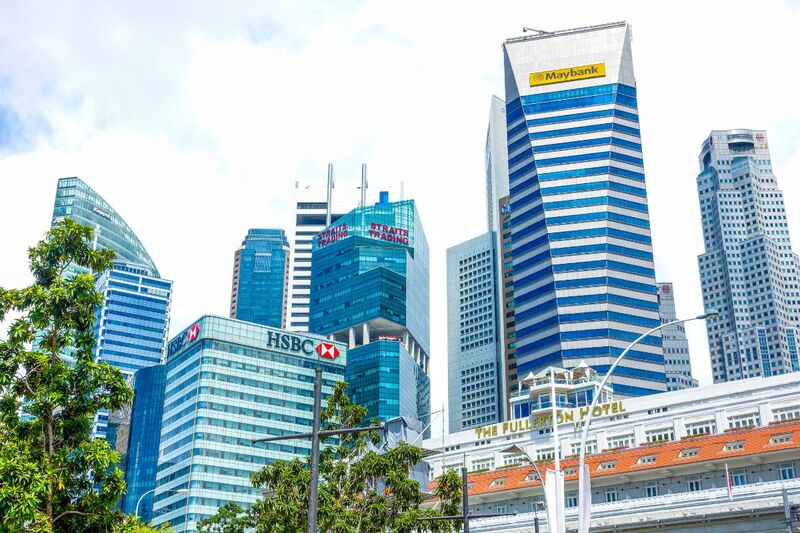Singapore's Economy on a Steady Course: Key Trends and Projections for Q3 - Q4 2024
As Singapore enters the second half of 2024, the economic outlook presents a mixed but cautiously optimistic picture. The first half of the year saw stronger-than-expected growth, driven by a rebound in manufacturing and robust performance in the services sector. This blog delves into the key trends for the remainder of the year, backed by data and expert analysis.
Economic Performance in Q2 2024
According to the Ministry of Trade and Industry (MTI), Singapore's economy grew by 2.9% year-on-year in Q2 2024, following a 3.0% growth in Q1 2024. On a quarter-on-quarter seasonally adjusted basis, the economy expanded by 0.4%, a slight improvement from the 0.3% growth in the previous quarter. The overall GDP growth was driven by the rebound in the Manufacturing sector, which grew by 0.5% year-on-year, reversing a 1.7% contraction in Q1.
Here's a breakdown of the key sectors:
Key Trends for Q3 - Q4 2024
1. Manufacturing Sector Recovery
The Manufacturing Sector’s recovery is a significant positive trend, with growth supported by output expansions across most clusters, except for Biomedical Manufacturing and Precision Engineering. The Electronics cluster, particularly Semiconductors, has shown strong growth, benefiting from reviving global demand. This trend is expected to continue in the latter half of 2024, with experts predicting a steady rise in goods exports.
2. Services Sector Performance
The Services Sector, particularly Information & Communications, Finance & Insurance, And Professional Services, continues to be a strong contributor to GDP growth. However, the pace of growth slightly moderated in Q2 2024, primarily due to the high base effect from the previous quarter, which was bolstered by significant events like major concerts. Going forward, the Services Sector is expected to maintain its momentum, although at a potentially slower pace, driven by sustained demand for IT solutions and Financial Services.
3. Construction Sector Growth
The Construction Sector has continued its robust growth, driven by increased Public Sector Construction projects. This trend is likely to persist as the government continues to invest in Infrastructure Development. On a quarter-on-quarter basis, the sector expanded by 2.4%, reversing the contraction seen in Q1 2024. The outlook remains positive, with ongoing public and private sector projects supporting the sector's growth.
4. Retail Trade and Consumer Spending
Retail Trade saw a contraction in Q2 2024 due to declining sales volumes in Apparel, Footwear, Watches, And Jewellery. Consumer spending is expected to remain cautious in the second half of the year, influenced by factors such as high-interest rates and slower wage growth. However, certain segments, particularly those tied to essential Goods And Services, are expected to perform better.
5. External Risks and Global Uncertainties
While the domestic economy shows resilience, external risks such as geopolitical tensions, global inflationary pressures, and uncertainties surrounding the US presidential elections in November 2024 pose challenges. These factors could impact global trade flows, which in turn, may affect Singapore’s export-driven economy. Analysts are particularly concerned about potential disruptions in the supply chain due to geopolitical conflicts, which could lead to increased costs and delays in the Manufacturing sector.
Outlook for the Second Half of 2024
The overall outlook for Singapore’s economy in the second half of 2024 remains cautiously optimistic. The MTI has maintained its full-year GDP growth forecast at 1% to 3%, with the first half of the year already achieving 3% growth. Analysts have upgraded their forecasts, with some expecting GDP growth to reach around 2.5% to 2.6% by year-end.
While manufacturing is expected to continue its recovery, supported by global demand for Electronics, the Services sector is likely to moderate. Construction remains a bright spot, driven by government infrastructure projects. However, domestic demand may remain subdued, with consumer spending likely to be cautious.
Key Takeaways:
- Manufacturing: Recovery expected to continue, led by electronics and semiconductors.
- Services: Steady growth, though at a moderated pace.
- Construction: Continued expansion driven by public sector projects.
- Retail: Cautious consumer spending may dampen growth.
- Risks: Global uncertainties, particularly geopolitical tensions and supply chain disruptions, could pose challenges.
As Singapore navigates the complex global environment, maintaining economic resilience and flexibility will be crucial. The government's focus on infrastructure and digital transformation will be key drivers of growth, positioning Singapore well for future opportunities despite external challenges.
Seeking Your Next Career Opportunity?
Submit your CV — Our trusted Career Consultants will review your resume and contact you if we find a position that matches your profile!
OR
Looking to Hire?
Please fill in this Inquiry Form — our Recruitment Consultants will be in touch with you soon!
Disclaimer:
The information provided in our blog articles is intended for general informational purposes only. It is not a substitute for professional advice and should not be relied upon as such.
While we strive to provide accurate and up-to-date information, the ever-evolving nature of certain topics may result in content becoming outdated or inaccurate over time. Therefore, we recommend consulting with qualified professionals or experts in the respective fields for specific advice or guidance. Any actions taken based on the information contained in our blog articles are solely at the reader's discretion and risk. We do not assume any responsibility or liability for any loss, damage, or adverse consequences incurred as a result of such actions.
We may occasionally provide links to external websites or resources for further information or reference. These links are provided for convenience and do not imply endorsement or responsibility for the content or accuracy of these external sources. Our blog articles may also include personal opinions, views, or interpretations of the authors, which do not necessarily reflect the views of our organisation as a whole. We encourage readers to verify the accuracy and relevance of information presented in our blog articles and to seek professional advice when needed.
Your use of this website and its content constitutes acceptance of this disclaimer.
Sources:
- Ministry of Trade and Industry (MTI) Singapore
- OCBC Bank Research
- Oxford Economics
- https://www.channelnewsasia.com/singapore/gdp-singapore-economy-q2-second-quarter-2024-4472916
- https://www.mti.gov.sg/Newsroom/Press-Releases/2024/04/Singapore-GDP-Grew-by-2_9-Per-Cent-in-the-Second-Quarter-of-2024#:~:text=Quarter%20of%202024-,Singapore's%20GDP%20Grew%20by%202.9%20Per%20Cent%20in%20the%20Second,growth%20in%20the%20previous%20quarter.
- https://www.straitstimes.com/business/economy/singapore-q2-growth-beats-expectations-at-29-as-manufacturing-recovers
- https://www.businesstimes.com.sg/singapore/singapore-q2-growth-beats-expectations-2-9
- https://www.humanresourcesonline.net/singapore-s-gdp-grew-by-2-9-in-q2-24-extending-the-3-growth-recorded-in-q1






